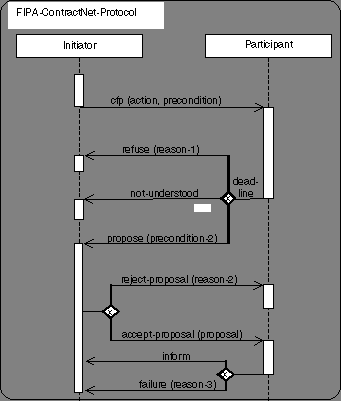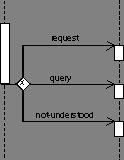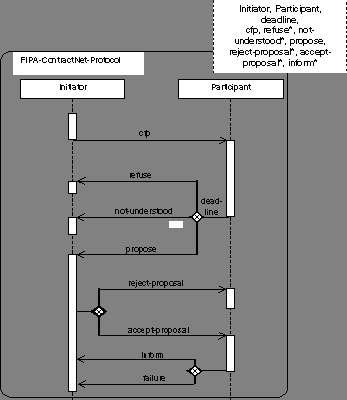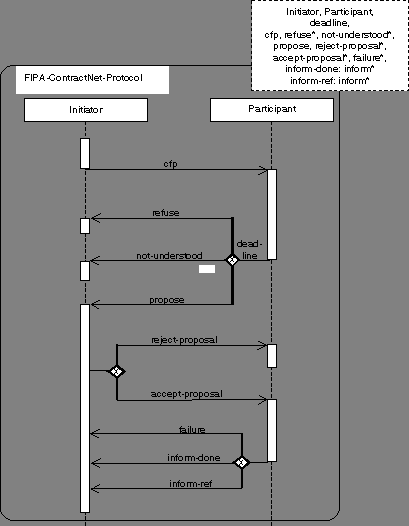| Performative |
Meaning |
| achieve |
S wants R to do make something true of their environment |
| advertise |
S is particulary suited to processing a performative |
| ask-about |
S wants all relevant sentences in R s VKB |
| ask-all |
S wants all of R s answers to a question |
| ask-if |
S wants to know if the sentence is in R s VKB |
| ask-one |
S wants one of R s answers to a question |
| break |
S wants R to break an established pipe |
| broadcast |
S wants R to send a performative over all connections |
| broker-all |
S wants R to collect all responses to a performative |
| broker-one |
S wants R to get help in responding to a performative |
| deny |
the embedded performative does not apply to S anymore |
| delete |
S wants R to remove a ground sentence from its VKB |
| delete-all |
S wants R to remove all matching sentences from its VKB |
| delete-one |
S wants R to remove om matching sentence from its VKB |
| discard |
S will not want R s remaining responses to a previous performative |
| eos |
end of a stream of responses to an earlier query |
| error |
S considers R s ealier message to be mal formed |
| evaluate |
S wants R to simplify the sentence |
| forward |
S wants R to route a performative |
| generator |
same as a standby of a stream all |
| insert |
S asks R to add content to its VKB |
| monitor |
S wants updates to R s response to a stream all |
| next |
S wants R s next response to a previously mentioned performative |
| pipe |
S wants R to route all further performatives to a another agent |
| ready |
S is ready to respond to R s previously mentioned performative |
| recommend-all |
S wants all names of agents who can respond to a performative |
| recommend-one |
S wants the name of an agent who can respond to a performative |
| recruit-all |
S wants R to get all suitable agents to respond to a performative |
| recruit-one |
S wants R to get another agent to respond to a performative |
| register |
S can deliver performatives to some named agent |
| reply |
communicates an expected reply |
| rest |
S wants R s remaining responses to a previously mentioned performative |
| sorry |
S cannot provide a more informative reply |
| standby |
S wants R to be ready to respond to a performative |
| stream-about |
multiple response version of ask about |
| stream-all |
multiple response version of ask all |
| subscribe |
S wants updates to R s response to a performative |
| tell |
the sentence in S s VKB |
| transport-address |
S associates symbolic name with transport address |
| unregister |
a deny of a register |
| untell |
the sentence is not in S s VKB |









